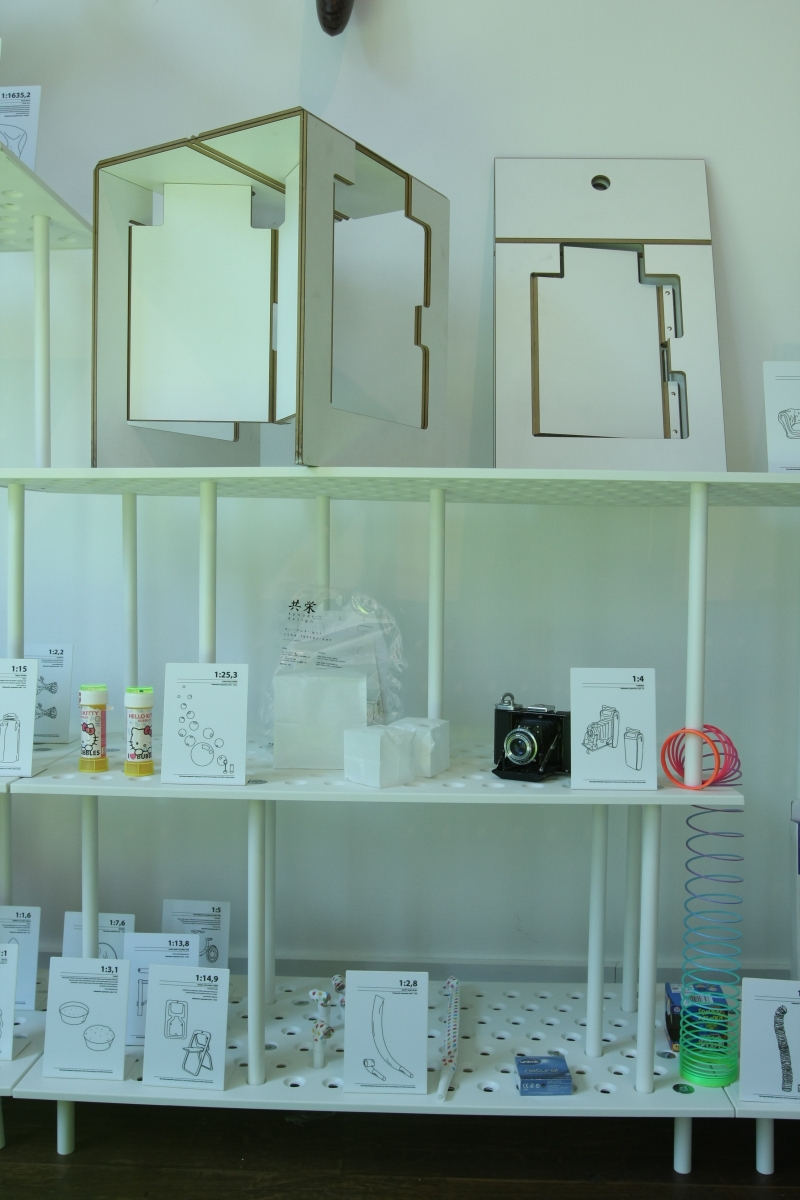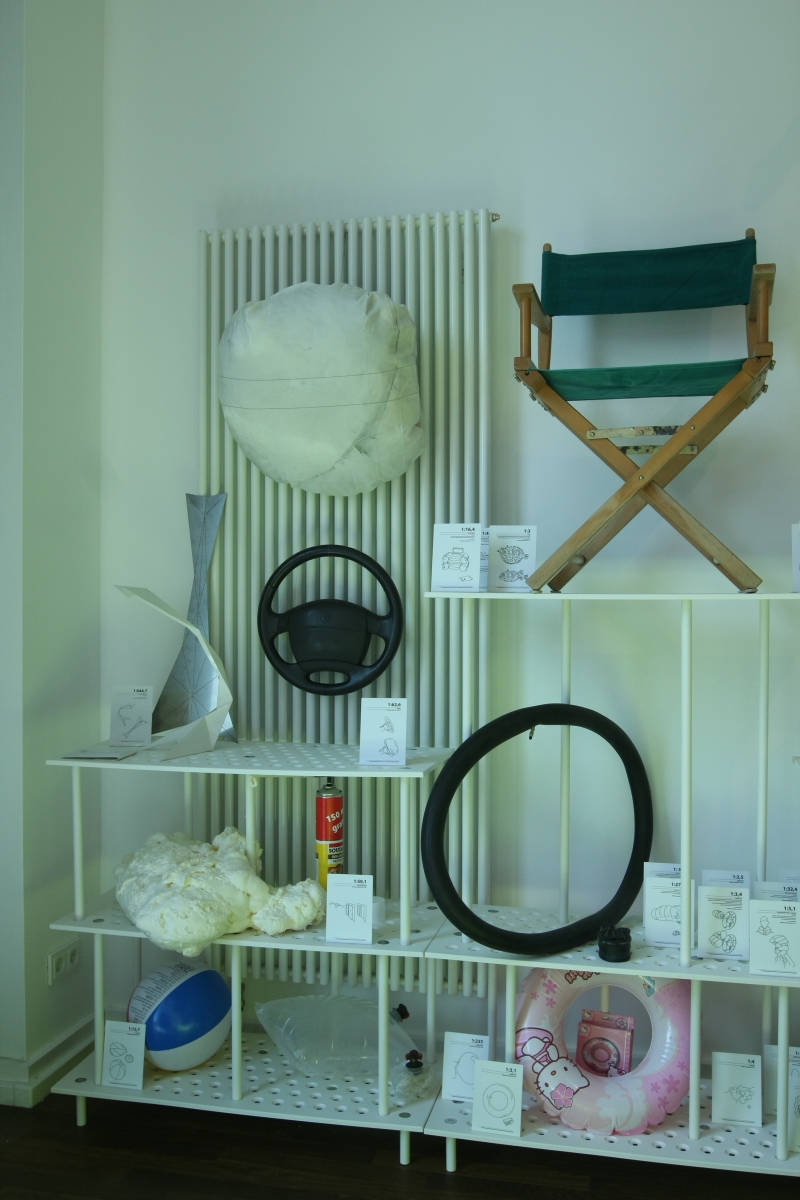We first came across the work of Polish born, Swiss based designer Oskar Zieta at DMY Berlin 2009.
And in 2010 wrote in the context of DMY's Swiss country focus:
Which shows just how long we've been cross, irritable, know-it-alls. Really is quite scary!
At DMY Berlin 2013 the country focus is Poland, and as part of the festivities the Polish Institute in Berlin is hosting an exhibition by and featuring Oskar Zieta.
An exhibition that appeals to us much more than the 2010 show.

Exploring the subject of volumetric expansion in design Zukunftsnomaden is split into two sections: the first presenting examples of Oskar Zieta's own work and the second looking in more general terms at objects that expand, or indeed have to expand to be any use.
And all displayed on the 3+ modular shelving system that Oskar Zieta unveiled during Milan 2013.
Although Oskar Zieta's name is prominently positioned in all aspects of the exhibition, the most interesting part has nothing to do with him.
The section of the exhibition looking at examples of objects that have to expand to be functional is a genuine revelation. Seeing such a huge collection of varied objects one becomes truly aware of just what a fundamental construction principle expansion is. From car airbags over fishing rods or kids toys and onto furniture and lighting there is barely a genre in industrial design where expansion in some context cannot be integrated.
The reason for the "need-to-expand-to-be-useful" is generally always to reduce the space required for the object in the "unused" form.
The car air bag, for example, can obviously only take up a certain amount of space, similarly only the fact that a shovel can be folded enables it to be taken on expeditions. Flatpack furniture takes up less space, and so fewer resources, when transporting it than its fully constructed cousins and folding furniture such as the stool Falter by dreipunkt 4 can be unobtrusively stored when not required. And effortlessly expanded when it is. Then there are special cases such as insulation foam which would be pretty useless if only available for purchase in its full dimensions, or the Blow Inflatable Armchair by Paolo Lomazzi, Donato D’Urbino and Jonathan De Pas where the expansion is pure provocation.
And sometimes it is nothing more complicated than the expanson brings the fun. As with the Jack-in-the-Box or the party blowout.
Oskar Zieta's own work stands in the exhibition in many ways as an example of an alternative application of expansion. Through inflating stainless steel sheets to create objects, be it the furniture he is know for, or the industrial applications he will become known for, Oskar allows stable, complex 3D objects to be created from a minimum of materials. Volumetric expansion as a form of optimal resource usage if you will.
Aside from the objects on display the other highlight of Zukunftsnomaden is the 3+ modular system used to present the exhibits. We missed its presentation in Milan - because we don't frequent the particular show where it was premiered - and so are looking all the more to getting the chance to examine it at DMY Berlin proper where it is being presented in the Central Exhibition at Tempelhof Airport.
Oskar Zieta - Zukunftsnomaden can be viewed at the Polish Institute Berlin until August 30th 2013.
And just by way of an afterthought....... The Polish Institute also has a branch in Leipzig. It would obviously be fantastic if after its run in Berlin Zukunftsnomaden came to Sachsen.
If only there was a company in Leipzig village that could help support such an exhibition......



